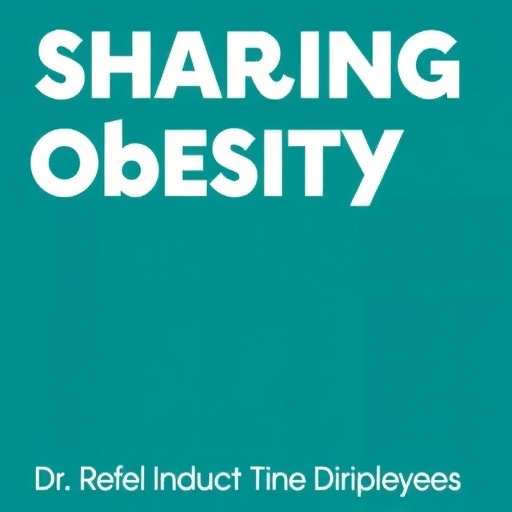
In an era where childhood obesity has escalated into a global health crisis, groundbreaking research unveils the profound impact that social and familial environments exert on the development and persistence of this condition. A recent study published in World Journal of Pediatrics by Trindade and colleagues offers a comprehensive analysis of the multidimensional factors shaping childhood obesity, underscoring the critical need for nurturing healthy futures through targeted social and familial interventions. This research marks a pivotal moment in understanding how intertwined social influences and family dynamics contribute to this complex medical and societal challenge.
Childhood obesity, characterized by excessive body fat adversely affecting health, has seen alarming increases worldwide over the past decades. Despite the well-established knowledge of dietary habits and physical activity as primary contributors, the nuances of social and familial factors have often been underestimated in both clinical treatment and preventive strategies. The researchers advanced the field by integrating multifaceted analytical methodologies to dissect these influences, highlighting how family lifestyle, parental behavior, and socio-economic conditions collectively mold children’s obesity trajectories.
The study highlights that familial environment extends far beyond genetic predispositions; it includes parental knowledge about nutrition, emotional support systems, and shared behaviors such as meal patterns and physical activity routines. The researchers employed a robust cohort design, incorporating behavioral assessments, socio-economic indexing, and anthropometric measurements. Their findings vividly portray that children nurtured in supportive homes with conscious parenting practices exhibit lower obesity rates and are less prone to associated metabolic disorders during adolescence and adulthood.
.adsslot_OnELwxTDV8{width:728px !important;height:90px !important;}
@media(max-width:1199px){ .adsslot_OnELwxTDV8{width:468px !important;height:60px !important;}
}
@media(max-width:767px){ .adsslot_OnELwxTDV8{width:320px !important;height:50px !important;}
}
ADVERTISEMENT
Moreover, social determinants such as community resources, peer interactions, school environments, and broader cultural norms emerge as substantial contributors to childhood obesity patterns. Neighborhoods lacking safe recreational spaces or access to nutritious food options significantly hamper efforts to cultivate physical activity and healthy eating habits among children. Trindade et al. meticulously explored these social gradients, revealing how disparities in socio-economic status manifest as unequal health outcomes, with children from disadvantaged backgrounds facing amplified risks.
A particularly striking aspect of the research is its focus on the psychological and emotional domains within family dynamics. The study identifies chronic stress, parental mental health issues, and family conflicts as catalysts that indirectly foster unhealthy eating behaviors and sedentary lifestyles among children. Such psychosocial stressors modify hormonal pathways, including cortisol regulation, which in turn influence fat accumulation and energy metabolism, providing a biological underpinning for the social observations.
The researchers also delve into the role of parental modeling, illustrating how children emulate parental attitudes not just toward food, but toward exercise, body image, and self-care practices. This modeling extends into the digital sphere, where the family’s interaction with technology either encourages sedentary behaviors or facilitates active lifestyle choices through apps and online communities. These dynamic interactions shed light on modern facets of familial influence rarely addressed in classical obesity research.
Crucially, this study challenges the one-size-fits-all approach predominant in public health initiatives by advocating for culturally-tailored interventions. The heterogeneity of social and familial contexts necessitates interventions that acknowledge cultural beliefs, parenting styles, and socio-economic realities. Trindade et al. emphasize that community engagement and culturally-sensitive educational programs can significantly enhance the efficacy of obesity prevention measures.
From a clinical perspective, the integration of social and familial contexts into routine pediatric evaluations can enhance early identification of children at heightened risk. The study encourages pediatricians and allied health professionals to incorporate comprehensive social history assessments and family counseling into obesity management plans. Such an integrative model promises more personalized and sustainable outcomes than treatments focusing solely on diet and exercise prescriptions.
The authors also advocate for policy reforms addressing macro-level determinants such as food marketing regulations, urban planning that promotes active living, and subsidies facilitating access to healthy foods for vulnerable populations. The interplay between policy and family-level strategies forms a dual-pronged approach essential for reversing childhood obesity trends.
Molecular and epigenetic insights are also woven into the narrative, with the research discussing how chronic exposure to adverse social environments may lead to epigenetic modifications that affect gene expression related to metabolism and appetite regulation. This emerging evidence suggests that the roots of obesity might be imprinted very early in life, influenced by familial and social factors that extend even into prenatal stages.
Importantly, the research reframes obesity not simply as an individual health condition but as a systemic issue embedded within social fabrics. By illustrating the interconnectedness of biological, psychological, and social factors, it calls for interdisciplinary collaboration spanning healthcare, education, urban development, and social services.
In conclusion, this definitive study enriches our scientific understanding of childhood obesity by elucidating how social and familial milieus orchestrate health outcomes. Its multifactorial approach paves the way for innovative prevention and treatment paradigms that honor the complex realities of children’s lives. As societies grapple with the pervasive challenge of obesity, harnessing the power of familial bonds and social context emerges as a vital strategy to nurture healthier futures.
The revelations articulated by Trindade and her team urge a paradigm shift—from isolated individual-focused interventions toward holistic frameworks acknowledging the child within the family and society. This research not only impels the medical community but also calls policymakers, educators, and caregivers to action. The future of pediatric health hinges on integrated efforts that cultivate supportive environments where children can thrive in both body and mind.
Ultimately, addressing childhood obesity through the lens of social and familial influence promises to stem the tide of this epidemic and offers hope for generations to come. By bridging gaps across disciplines and communities, we stand to innovate more effective solutions that transcend conventional boundaries. Such comprehensive understanding embodies the forefront of pediatric research in 2025 and encapsulates the intricate tapestry of influences shaping child health in our modern world.
Subject of Research: Social and familial influences on childhood obesity
Article Title: Nurturing healthy futures: social and familial influences on childhood obesity
Article References:
Trindade, T.S., Duarte, H.N., Brito, T.M. et al. Nurturing healthy futures: social and familial influences on childhood obesity. World J Pediatr 21, 328–332 (2025). https://doi.org/10.1007/s12519-025-00906-6
Image Credits: AI Generated
DOI: April 2025
Tags: childhood obesity prevention strategieschildhood obesity researchemotional support in familiesfamily dynamics and healthfamily interventions for healthy futuresglobal health crisis of childhood obesitylifestyle habits and obesitymultidisciplinary approach to obesitynutrition knowledge and obesityparental influence on childhood obesitysocial factors in childhood obesitysocio-economic impact on childhood obesity





